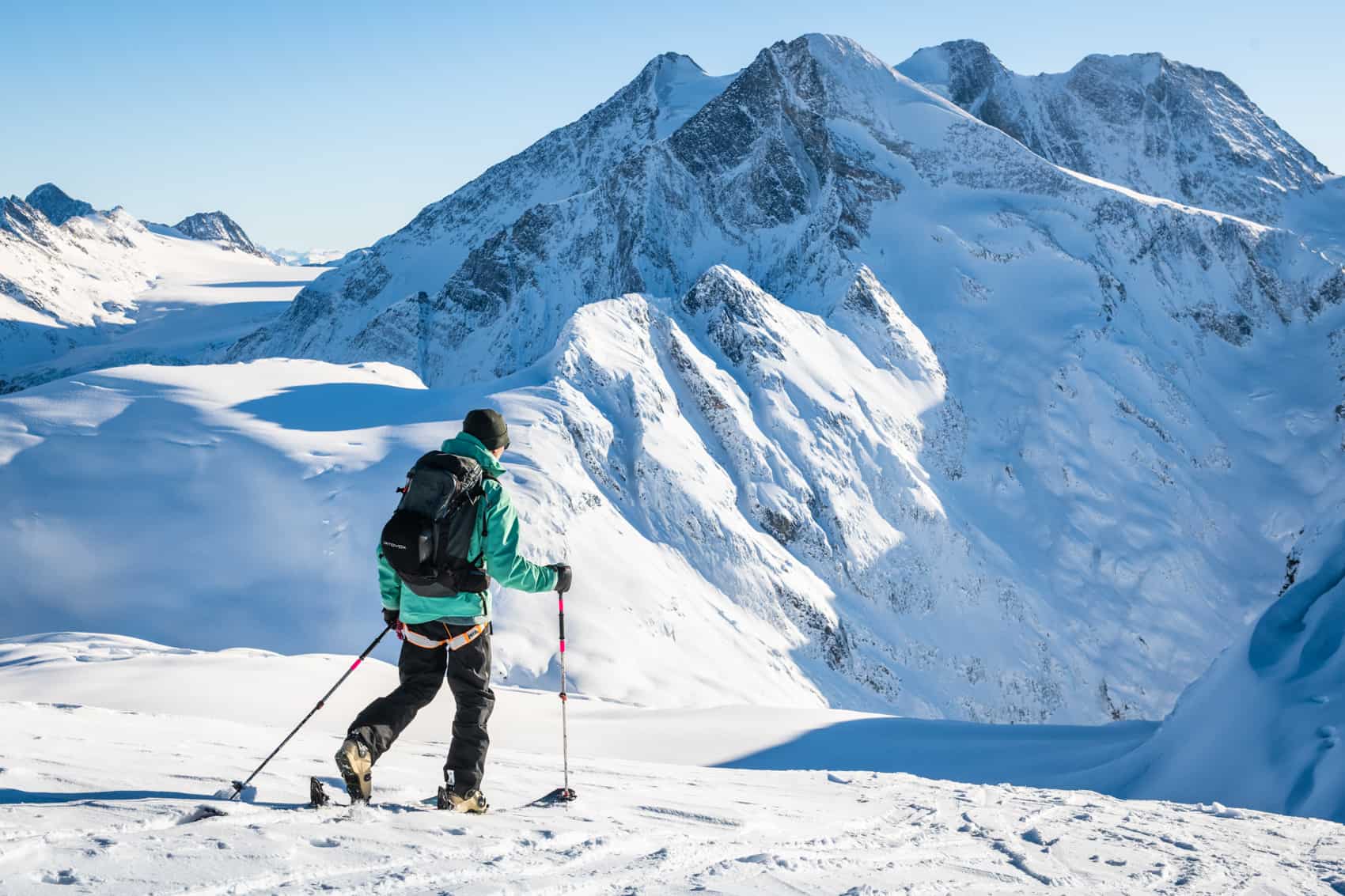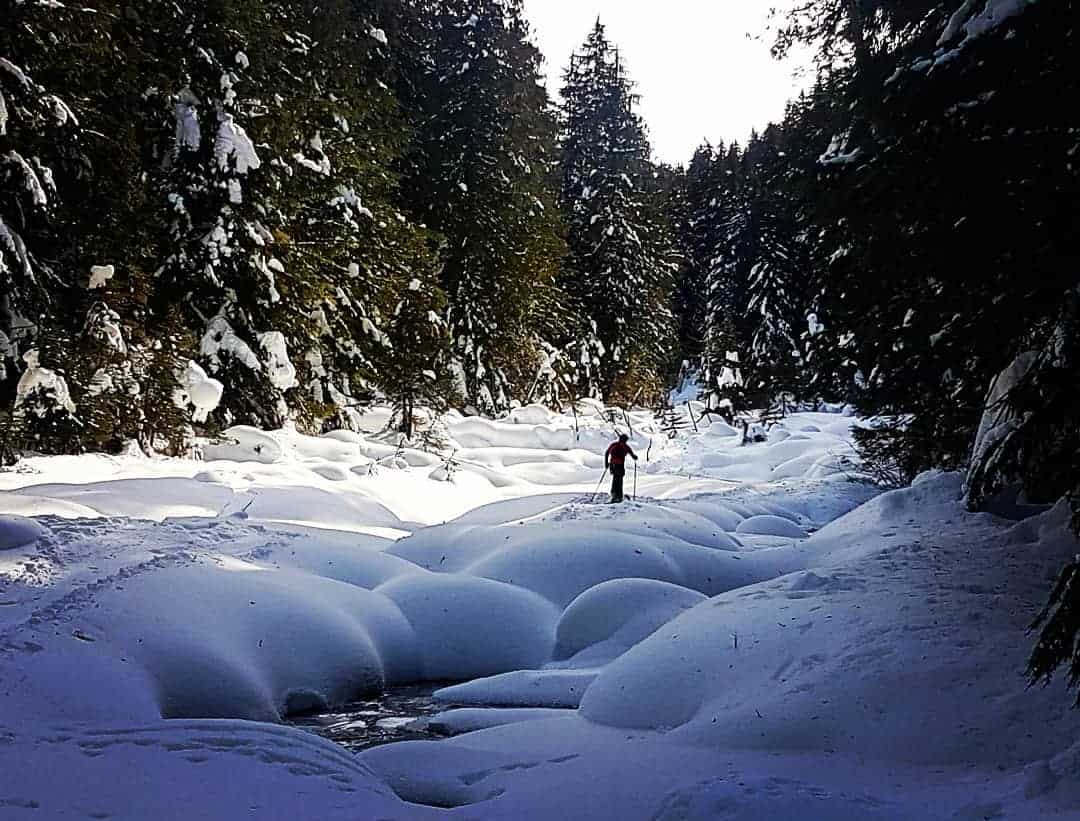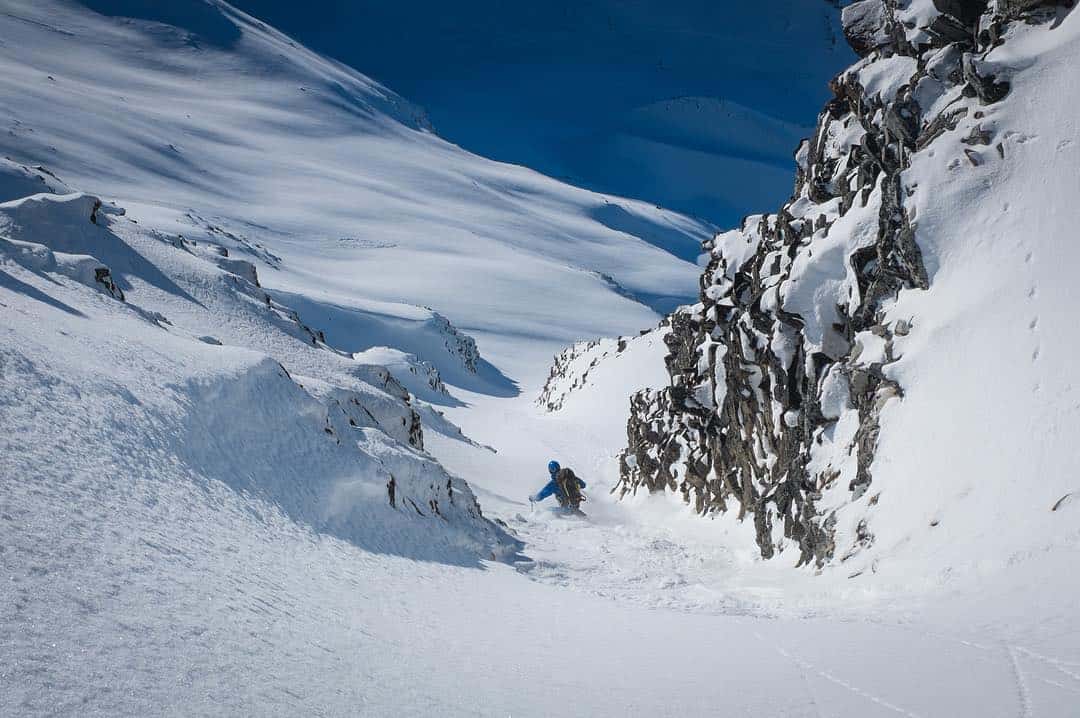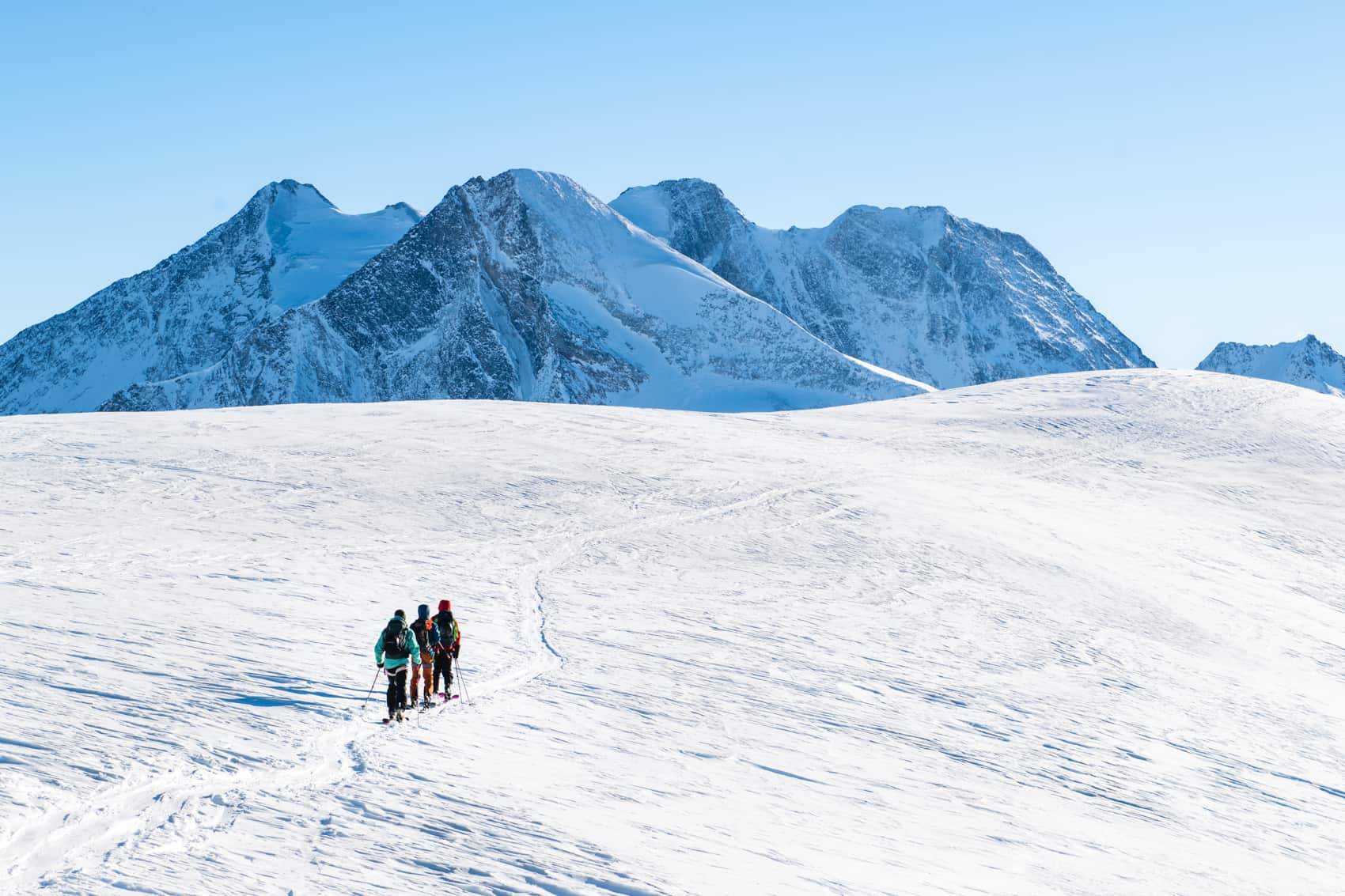Maximize your backcountry experience with these tips.
By Kirsten Silfvenius, Headwaters Marketing
Revelstoke is a well-established ski touring destination for many good reasons, but if you’re just starting to explore Revelstoke take planning seriously. There is lots of big terrain here and planning for a safe backcountry trip takes some effort. In this post, we’ll share 6 tips to get started ski touring in Revelstoke so you can enjoy the area safely and efficiently.
1. Bring Avalanche Safety gear and Backcountry-Specific Gear.
You’ll want to have a system of skis, bindings, and boots that are designed for the backcountry with climbing skins that are cut for the specific ski or splitboard you’re using. An avalanche transceiver, shovel, and probe that’s long enough for our snowpack (3 metres or longer) will help set you up for success in addition to the other contents of your touring pack.
Tip: If you’re borrowing from friends or renting gear, ask the owner about any known troubleshooting tips — especially for your specific model of bindings.

2. Read and understand the Avalanche Forecast.
It is essential that you check the avalanche forecast before heading into the backcountry. Understand the avalanche ratings for the area you plan to ski as well as any potential dangers in the snowpack. Take note of changing weather and its potential impact on conditions.
Tip: Avalanche Canada offers an online tutorial, Avy Savvy, that will serve as a great introduction for those who are new to backcountry, or as a refresher for experienced recreationalists.
3. Explore Terrain with a Guided Trip, or refresh your skills with avalanche canada training.
The fastest and safest way to experience Revelstoke’s backcountry ski touring terrain is to sign up for a guided trip or join a class led by a qualified instructor. Courses are available through local providers all winter, and can also be a good way to meet future touring friends. Guides will save you years of frustration by bringing you to the best terrain for the conditions and your skills.
Tip: Avalanche Skills Training Level 1 (AST1) is considered the minimum education you need if you’re considering entering avalanche terrain without a guide. Don’t forget the less glamorous dangers of cold exposure, medical emergencies, and group dynamics before you head out.
Check out Avalanche Canada's list of available courses. Consider levelling up your education or taking a refresher.


4. Check established sources for ski line beta.
After you’ve downloaded or purchased local maps, you might still be confused about where to begin. While everyone has their favourite secret stashes, you can get started on finding your own with information from the following sources:
Rogers Pass North & Rogers Path South Guidebooks and map by Douglas Sproule is available for sale online and at local shops.
Beyond Our Peak has blog posts and pictures for a variety of runs, many of which can be cross-referenced with Doug Sproule’s book and map. For Rogers Pass, Parks Canada offers a variety of terrain photos on its website.
5. LEARN IT – GET YOUR PERMIT – Rogers Pass avalanche control and the Winter Permit System.
In the Revelstoke area, it is important to learn and respect rules that govern access to popular touring areas. This is particularly important if you’re visiting Rogers Pass in Glacier National Park. For your safety, some areas are only open when no avalanche control is anticipated or may be closed when you plan on visiting. Other areas are permanently closed. You must obtain a free Parks Canada winter permit and know where you are going in order to stay out of closed areas. There are serious consequences for violating terrain closures: If you enter a closed area, you will be responsible for the permanent closure of some of Canada’s best and most accessible ski touring in addition to putting yourself in the literal line of fire.
Tip: Check directly with the organization responsible for managing the terrain where you’re touring to avoid pulled passes, abject physical danger, and the ire of the local touring community.
- Parks Canada - Glacier National Park
- Revelstoke Mountain Resort
- Revelstoke Nordic Club (Mount Macpherson Access)
- British Columbia Resource Road Safety

6. Make a plan & Save Local Emergency Phone Numbers.
Take responsibility for your group’s safety by making an informed route plan, sharing it with a trusted contact, and saving emergency numbers on your phone. Cell service is expanding but not dependable in many popular touring areas, so calling the right agency when you have service and battery can help you get help more quickly in an emergency. In most scenarios, call 911. When you have a backcountry emergency in Mount Revelstoke and Glacier national parks, contact their dispatch office directly with the number listed on their website and printed on the back of winter permits.
Tip: If you’re bringing an emergency satellite communication device (like an inReach®), make sure it will not trigger an SOS call unintentionally. Local search and rescue organizations respond to multiple false calls every season.
Revelstoke’s backcountry ski and splitboard terrain has so much to offer locals and visitors. Respecting land-use restrictions and taking responsibility for your group’s safety is the key to ensuring fun days in the backcountry for years to come. If this post has helped you get started ski touring in Revelstoke, don’t forget to bookmark it and share it with a friend. See you on the skin track, and we’ll look forward to seeing your photos.
For more information about trip preparedness, visit AdventureSmart BC.
Please note that links shared in this post are not necessarily affiliated with Tourism Revelstoke.
SHARE YOUR ADVENTURES
When you're posting about your epic adventures in Revelstoke, use #TheRealStoke to share your Revelstoke experience with us.